The Northwest Coast culture area stretches along the Pacific coast between the Cascade Mountains and the ocean. It extends north of California to Alaska. This is an area which is the home to many Indian nations who traditionally based their economy on the use of sea coast and river ecological resources. The Northwest Coast culture area stretches from the Tlingit homelands in Alaska to the Tolowa homelands in northern California.
In his book Northwest Coast Indian Painting: House Fronts and Interior Screens, Edward Malin writes:
“This narrow littoral was a region of immense physical complexity, an oceanic environment clothed in limitless forest covering the rugged and precipitous mountain ranges.”
Edward Malin also describes it this way:
“The region is an immense symphony of churning ocean, occasionally becalmed, but never tranquil, seemingly countless inlets and impregnable fjords, and mountain chains, one following another mantled in a dense forest of red cedar, spruce, and hemlock.”
Woven baskets were important to the Northwest Coast nations. Writing in 1895, anthropologist Franz Boas, in an article reprinted in Indians of the North Pacific Coast: Studies in Selected Topics, reports:
“A great variety of baskets are used—large wicker baskets for carrying fish and clams, cedar bark baskets for purposes of storage.”
Baskets were made by coiling, plain twining, wrapped twining, and checker weaving. The coiled baskets were made watertight so that they could be used for boiling water. Hot rocks were placed in the water-filled baskets until the water boiled.
The Maryhill Museum of Art near Goldendale, Washington, has a collection of Northwest Coast baskets on display.
Cedar-Bark Baskets
According to the Museum display:
“Cedar bark was used by tribes throughout the coastal region to make a variety of utilitarian baskets. It is usually impossible to identify such baskets by specific tribes. Strips of bark were cut in even widths and plaited or twined into baskets for carrying and storing foods and personal belongings. Simple patterns were made by using dyed and undyed materials together, or inlaying decorative materials.”
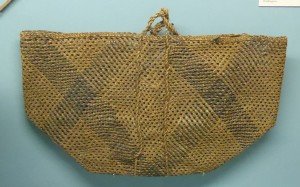
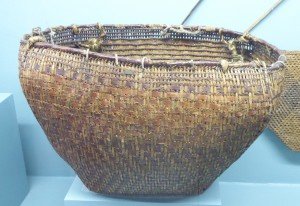
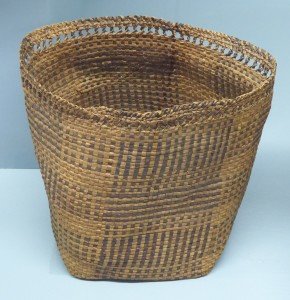
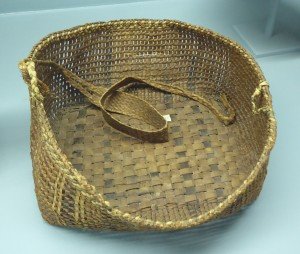
Southern Northwest Coast
The southern portion of the Northwest Coast stretches along the Pacific coast of Washington and Oregon. This includes the Coast Salish, southern Athapaskans, and Chinook. This is the least homogeneous area in the Northwest Coast and shows ties with California to the south and the Plateau to the east.
According to the Museum display:
“Baskets from this region are woven in many varieties of twining, some with designs in simple bands, while others are more complex.”
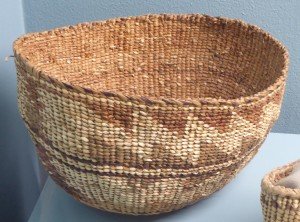
Shown above is a Coos Bay basket.
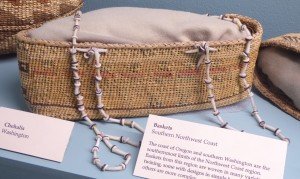
Shown above is a Chehalis basket.
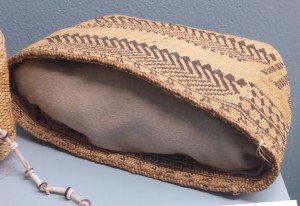
Shown above is a Tillamook basket.
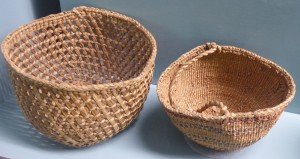
Shown above are Quiliute and Quinault baskets.
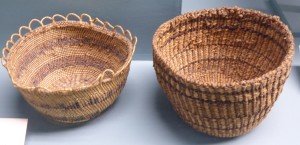
Shown above are Quiliute and Quinault baskets.
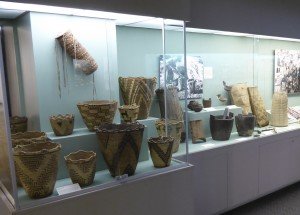
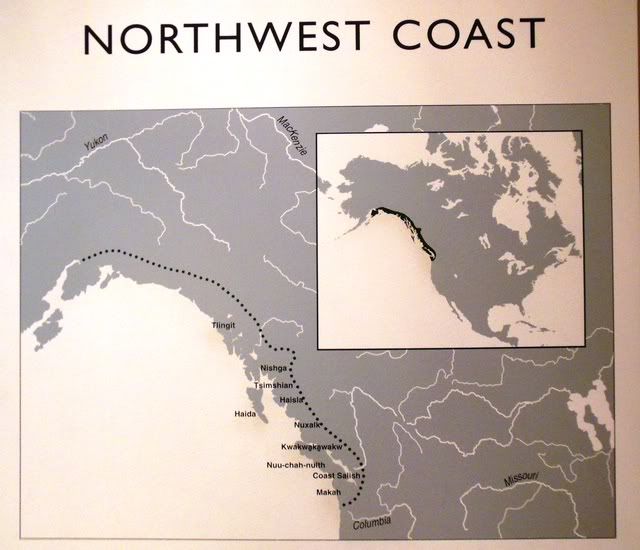
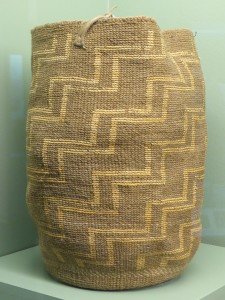
Leave a Reply